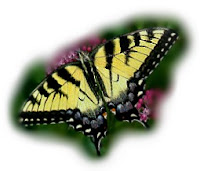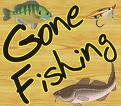Here's Wendy's list of what we saw on this hike:
BIRDS American goldfinches (po-ta-to chip), white-crowned sparrows, osprey, California quail, great egret, red-winged blackbirds, Western grebes, HORNED LARK, pintail with duckling! When the Marin Breeding Bird Atlas was done in 1993 there were no pintails nesting at Point Reyes. In Marin it was “an uncommon, very local breeder” with 4 confirmed nests, 8 possible and 2 probable. One of the “possibles” was on Drakes estero. FEMALE SNOWY PLOVER ON NEST!
FLOWERS (CAPS MEANS NEW FLOWER FOR THIS CLASS THIS SEASON)
YELLOW
Yellow bush lupine, BRASS BUTTONS (S.African), CA poppies (not so orange here!), potentilla aka cinqefoil, seep-spring monkeyflower, BEACH EVENING PRIMROSE, YELLOW SAND VERBENA, LARGE MARSH BUTTERCUP
WHITE
Spring snow (Pink family), yarrow, cow parsnip (scientific name Heracleum for Hercules because it’s so big), poison hemlock (red spots on stem are “Socrates’ blood”), CA blackberry, wild radish (also lavender and yellow), HELIOTROPE (white to purplish), BROWNIE THISTLE, baby stars
PINK/MAGENTA
Salmonberry (some berries already), POINT REYES CHECKERBLOOM (endangered), Siberian candyflower (candy cane stripes), EUROPEAN SEA ROCKET (AKA horned sea rocket), cow clover, cobweb thistles
PURPLE/LAVENDAR
Douglas iris, lupine, asters, GIANT COASTAL HEDGE NETTLE, GROUND BRODIAEA, short and pale version of Ithuriel’s spear, blue-eyed grass, prunella (self-heal)
RED
Sheep sorrel, Indian paintbrush
ORANGE
Scarlet pimpernel (non-native)
NO FLOWERS
Horsetails, notch leafed pennywort (thick under bridge), SPINY SANDMAT, WILLOW-LEAFED DOCK, COYOTE THISTLE, SAND SPINEFLOWER (List 1, endangered)
BUTTERFLIES
POINT REYES BLUE (ENDANGERED! Host plant lupines.) Painted lady. About that green butterfly – the Bramble Hairstreak has been split into species, the COAST GREEN (host plant buckwheats and Ceanothus) which is what we saw, and the Bramble (Callophrys perplexa for those who are perplexed about this split) which is mostly in chapparral.
OTHER INSECTS
TIGER BEETLES (including mating pair), a dead BUMBLEBEE SCARAB BEETLE (ENDANGERED!) Most active May and June between 10 AM and 1 PM. This species, Lichnanthe ursina occurs from Sonoma to San Mateo.) SAND WASPS ( Genus Bembix, maybe species comata)
MAMMALS
2 WEASELS! We have both long-tailed and short-tailed weasels in our area. The short-tailed is the one that gets a white coat in the mountains in the winter and is called an ermine (also the one called a stoat in England). Marin is the southern end of its range. Short-tailed: active day and night, eats mainly mice and small ground nesting birds. Black on tail is distal third. Mate late summer, delayed implantation so 4-8 young are born the following spring.
Long tailed weasel: black tail tip. Can kill rabbits several times their own weight, but prefer rodents (loves rats!) and birds. In mating remain clasped for two hours or more. Uses hollow log or old squirrel nest. Young weigh 3 grams at birth! Weaned at 5 weeks.
I didn’t get a good enough look at amount of black on tail to say for sure which we saw, but I’m guessing long-tailed Deer mouse.
(Click here if you want to view and print a copy of this list. If you have Adobe Acrobat Reader on your computer you can print the document. Once you see the document on the "Scribd" Web site, click on the "Download" icon and then on the "PDF" icon to open the document on your computer).
 The Marin Butterfly Count will be Sunday, June 29. We will meet at Kenneth "Doc" Edgar Park in Fairfax (junction of Cascade Drive and Bolinas Road) at 9:30 AM. (Click here for a Google Map).
The Marin Butterfly Count will be Sunday, June 29. We will meet at Kenneth "Doc" Edgar Park in Fairfax (junction of Cascade Drive and Bolinas Road) at 9:30 AM. (Click here for a Google Map).




